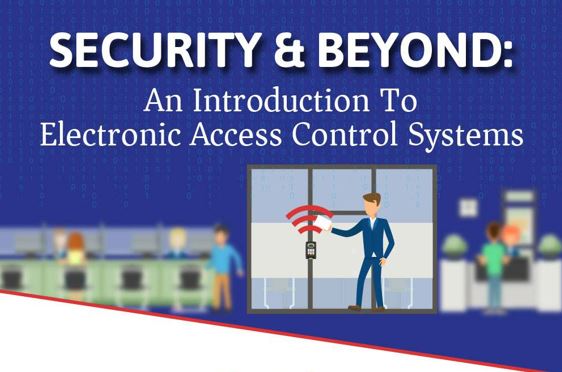The SIM card has been around for a long time, but it is no longer used in modern, high-end phones. Instead, embedded SIMs, or eSIMs, are used by manufacturers to identify your device to carriers. Pay-as-you-go services like Straight Talk continue to use traditional SIM cards, but it’s becoming more common for your phone to come with an eSIM rather than a physical SIM card.
But what exactly is an eSIM? Here, we explain what an eSIM is and how it’s different from a removable SIM card.

What is a SIM card?
This is the more common of the two options. It’s a Subscriber Identity Module that slides into a device like a drawer and sits in a special tray. It is typically provided by a carrier and pre-programmed with account information such as your phone number and security keys in order to identify and authenticate you on your carrier’s network. SIM cards can also store contacts and SMS messages, though these features are rarely used nowadays because smartphones are so powerful.
Without this card, your phone lacks a valid phone number and thus cannot make or receive calls over a wireless network. The United States and many other countries require phones to be able to call emergency services even if they do not have a SIM card — but this is an exception. This small card has a notch in one corner and gold circuits on one side that connect to your phone’s card reader. SIM cards are available in four sizes: standard, mini, micro, and nano, so make sure you get the right one for your phone.
Most importantly, because a SIM card is removable, you can easily swap it from one device to another. This enables you to upgrade your phone without having to contact your carrier. It’s also a great way to avoid roaming charges when traveling by establishing a pay-as-you-go service with a local carrier at your destination; simply swap out your regular SIM card for a card from a local carrier, and you’ll have a new phone number on their network. Prepaid SIM cards are frequently available at airport kiosks, and you can be up and running with a local number minutes after landing.
You may also like New Apple iPad Air 4th Generation
What is an eSIM?
An embedded SIM, also known as an eSIM, cannot be removed. It’s a programmable SIM card that’s physically connected (soldered) to the motherboard of your smartphone. It performs all of the functions of a removable SIM card, but it cannot be physically removed — at least not without breaking open the phone and unsoldering the chip.
At first glance, this may appear to be a problem. For example, if you have a phone with a removable SIM card and are traveling abroad, you can swap to another carrier’s SIM card to get local coverage and avoid paying roaming fees from your primary carrier. Similarly, if you want to switch local carriers while keeping your phone, a removable SIM card can be popped out and quickly replaced with a new one. Your initial thought may be that this is impossible with an eSIM.
However, eSIM technology, at least in theory, makes switching carriers even easier. Instead of waiting for a new SIM card to arrive or going to a store, you can make the switch right on your phone by entering information from your carrier — often simply by scanning a QR code with your smartphone’s camera. If your smartphone includes an eSIM, you’ll find options in the settings to configure it, switch between lines and carriers, and manage your accounts. If you have a dual-SIM device, eSIM technology may support multiple accounts, and switching between them is simple.
Unfortunately, while obtaining an eSIM should be simpler than obtaining a physical SIM card, this is not always the case. Some carriers have been slower to embrace the seamlessness of eSIM than others, and it’s not uncommon to come across a few that still want to mail you your eSIM codes or require you to visit a store before you can set up your phone. That eliminates one of the most significant benefits of using an eSIM, but thankfully, most carriers are working quickly to catch up.
Another significant advantage of eSIM technology is the elimination of a physical SIM tray. Because the eSIM chip is embedded on the device’s motherboard, there is no unnecessary space taken up by placing a slot and tray on the device’s outside edge. Thinner designs and larger batteries are now possible.
You may also like Reasons to buy 13-inch MacBook Pro instead of the MacBook Air
When to start using an eSIM
As previously stated, your mobile device most likely already has an eSIM card. Laptops with cellular connectivity, such as the Surface Pro X and various models from Acer, Asus, Dell, HP, Lenovo, and Samsung, typically connect via eSIM technology. SIM cards are still used in laptop designs in some cases, but this is becoming less common.
Many phones will still have a tray for a removable SIM card until eSIM technology becomes the universal standard. There’s nothing wrong with using one of these phones; they’re simply an older method of identifying yourself on a carrier’s network. Nonetheless, due to its size and delicate do-not-touch circuits, swapping out a SIM card can be difficult. Using an eSIM is simpler for everyone, whether you’re switching phones or switching carriers.
If you have a dual-SIM phone with a physical SIM card as well as an eSIM, such as an iPhone or Google Pixel, you may be able to transfer your physical SIM information directly to your eSIM. Many carriers permit this, and iOS and Android provide tools to make the process quick and simple. After that, you can discard your old SIM card and free up that slot for a physical SIM card for travel.
Nonetheless, while you should check ahead, you might be surprised at how many international carriers support eSIM, and it’s hard to argue that scanning a QR code is much easier than fiddling with a small and fragile SIM card, especially when traveling through a busy airport.
You may also like Apple Watch Series 8: Everything you need to know
eSIM technology compatibility
Google’s Pixel 2 came with an eSIM that only worked with Google Fi, whereas the Pixel 3 and newer Pixel devices work with third-party mobile carriers. With the Galaxy S20, Samsung introduced eSIM to its flagship smartphone lineup, and Microsoft’s Surface Pro LTE was the first Windows 10 device to include eSIM technology.
Apple Watch Series 3, the first LTE-capable Apple Watch, introduced eSIM in 2017. While the Apple Watch is the only device that uses eSIM, when the iPhone XS and iPhone XR were released the following year, Apple added eSIM to supplement the physical SIM card slot and support two phone lines. Apple also included eSIM in the 2018 iPad Pro, though it did not remove the physical SIM card slot; eSIM was provided as an alternative for those who preferred to use it to set up their iPad for cellular service rather than a physical SIM.
In nearly all iPhone models, Apple continues to use a combination of a physical SIM card and an eSIM. However, the iPhone 13 gained support for two eSIM cards last year, allowing users to get dual-SIM support without the need for a physical SIM card. This paved the way for this year’s iPhone 14 lineup, in which Apple has removed the physical SIM card slot entirely on US models, making eSIM the only way to activate your iPhone 14 on a carrier network.
Most other countries’ iPhone 14 models continue to include two eSIM cards and one physical SIM card slot, as did the iPhone 13. China is a notable exception to this rule, as eSIM has never been included on an iPhone. Instead, Apple introduced the iPhone XS/XR in China with two physical SIM card slots. This practice has continued to the present day, even with the iPhone 14 lineup, which in China still has two physical SIM slots — and no eSIM at all.
However, if you live in the United States and want a physical SIM card slot on your iPhone 14, there is one thing you should know before heading up to Canada or down to Mexico to do some cross-border shopping. Although all iPhone models in North America support the same 4G/LTE, low-band 5G, and mid-band 5G frequencies, only iPhone models in the United States support the mmWave 5G used for the fastest portions of Verizon’s 5G Ultra Wideband and AT&T’s 5G Plus coverage.
Would you like to read more about eSIM Cards-related articles? If so, we invite you to take a look at our other tech topics before you leave!










